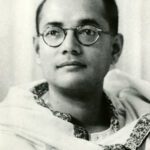Name: Shivaji Bhonsle (Chhatrapati Shivaji Maharaj)
Date of Birth: February 19, 1630
Birthplace: Shivneri Fort, Pune district, Maharashtra
Parents: Shahaji Bhonsle (Father) and Jijabai (Mother)
Reign: 1674–1680
Spouse: Saibai, Soyarabai, Putalabai, Sakvarbai, Laxmibai, Kashibai
Children: Sambhaji, Rajaram, Sakhubai Nimbalkar, Ranubai Jadhav, Ambikabai Mahadik, Rajkumaribai Shirke
Religion: Hinduism
Death: April 3, 1680
Seat of Power: Raigad Fort, Maharashtra
Successor: Sambhaji Bhonsle
Shivaji Bhonsle: The Founder of the Maratha Empire

Chhatrapati Shivaji Maharaj, born on February 19, 1630, in the Shivneri Fort, Pune district, Maharashtra, was a remarkable historical figure known for founding the Maratha Empire in Western India. He is celebrated as one of the most formidable warriors of his era and is still remembered through folklore for his remarkable exploits.
Childhood & Early Life
Shivaji’s upbringing in Shivneri Fort was under the guidance of a council of ministers, including a Peshwa, a Mazumdar, a Sabnis, a Dabir, and a chief teacher. His mother, Jijabai, played a significant role in instilling in him a strong sense of ethics. At a young age, he displayed leadership qualities and had a deep understanding of the Sahayadri Mountains.
Struggles with Bijapur
In 1645, Shivaji began to assert control over strategic regions under the Bijapur Sultanate, leading to a clash with Mohammed Adil Shah, who ordered the imprisonment of Shivaji’s father, Shahaji, in 1648. Shivaji continued his conquests after Shahaji’s death in 1665 and engaged in battles against the Bijapur Sultanate. His strategic prowess led to victories, including the Battle of Pratapgarh and the Battle of Kolhapur.
Conflicts with the Mughals

Shivaji’s conflicts with the Mughals, particularly with Aurangzeb, began in 1657 when he raided and looted Mughal territories. This resulted in Aurangzeb directing Shaista Khan to subdue Shivaji, leading to a series of battles and confrontations. Eventually, a treaty was signed, but hostilities resumed in 1670, with Shivaji reclaiming most of his territories from the Mughals within four months.
Relationship with The English
Initially, Shivaji had a cordial relationship with the English. However, conflicts arose when the English supported the Bijapur Sultanate in a confrontation against him. These conflicts continued, leading to hostilities and the looting of English factories in Rajapur.
Coronation and Conquests
In 1674, Shivaji was crowned the King of Marathas at Raigad, marking the establishment of the first Hindu sovereignty in South India. He undertook aggressive conquests to consolidate Deccan states under Hindu rule, capturing various territories and forts.
Administration
Shivaji implemented a well-structured administration with himself as the supreme sovereign. Eight ministers oversaw various aspects, including general administration, finances, spiritual affairs, foreign policies, military, justice, record-keeping, and royal correspondence. He promoted the use of Marathi and Sanskrit and was known for his tolerance of all religions, opposition to caste discrimination, and introduction of the Ryotwari system to collect revenues directly from farmers.
Demise and Legacy
Shivaji passed away on April 3, 1680, at the Raigad Fort. His death led to a succession dispute between his son Sambhaji and his third wife, Soyrabai, which had lasting consequences on the Maratha Empire. Despite challenges, the Maratha glory was later reclaimed by leaders like Madhavrao Peshwa, who restored Maratha authority over North India.
Chhatrapati Shivaji Maharaj’s legacy as a visionary leader, brilliant military strategist, and administrator endures, making him a revered figure in Indian history.







